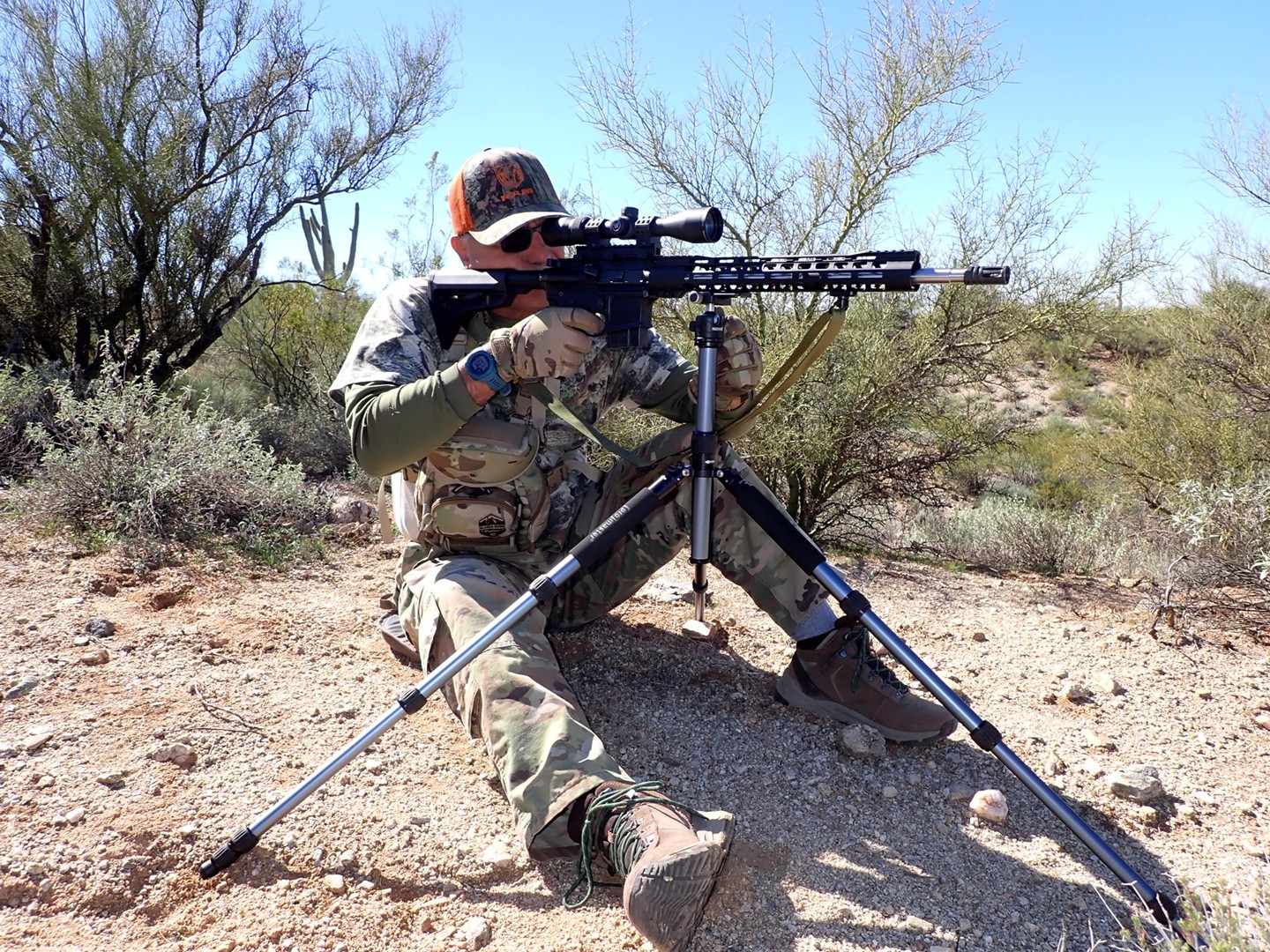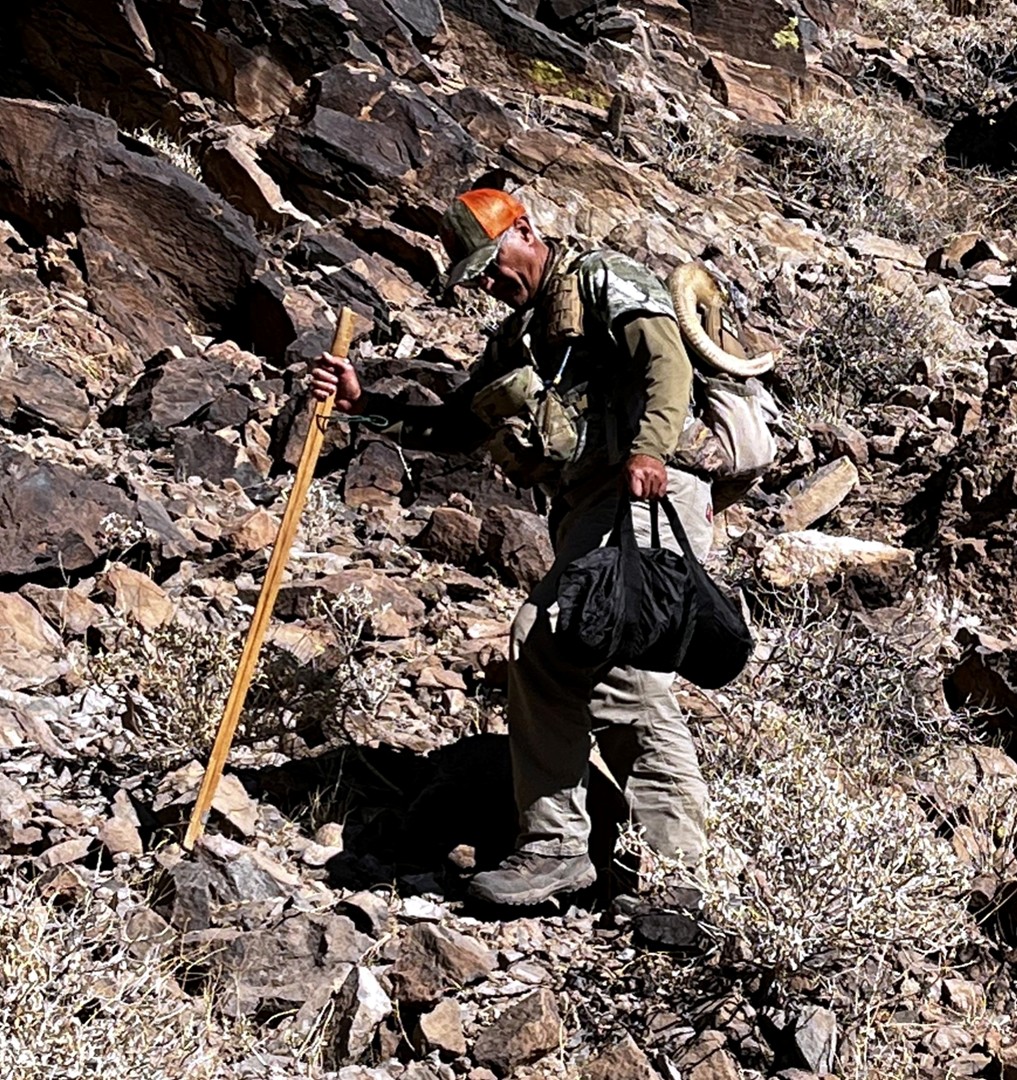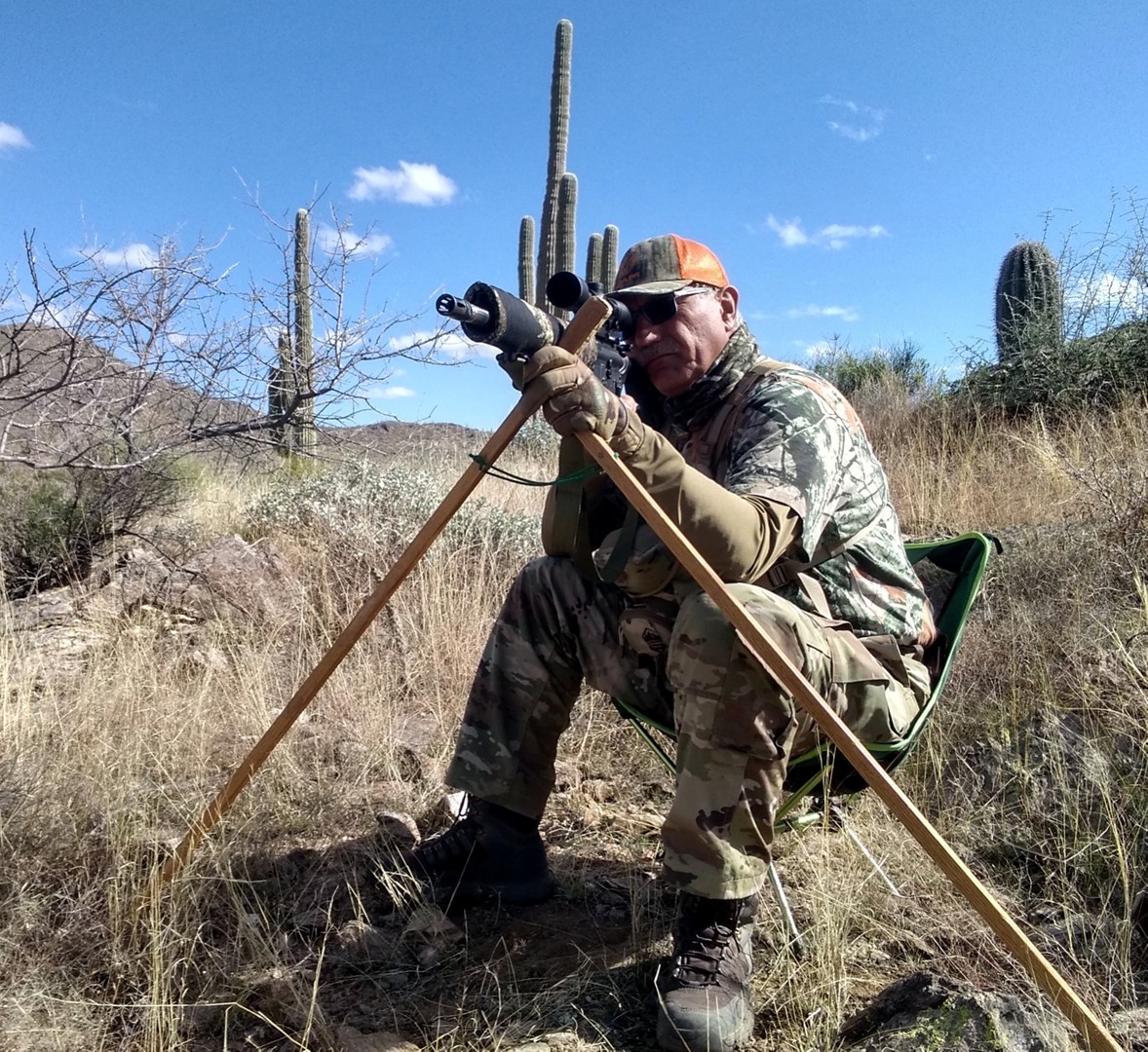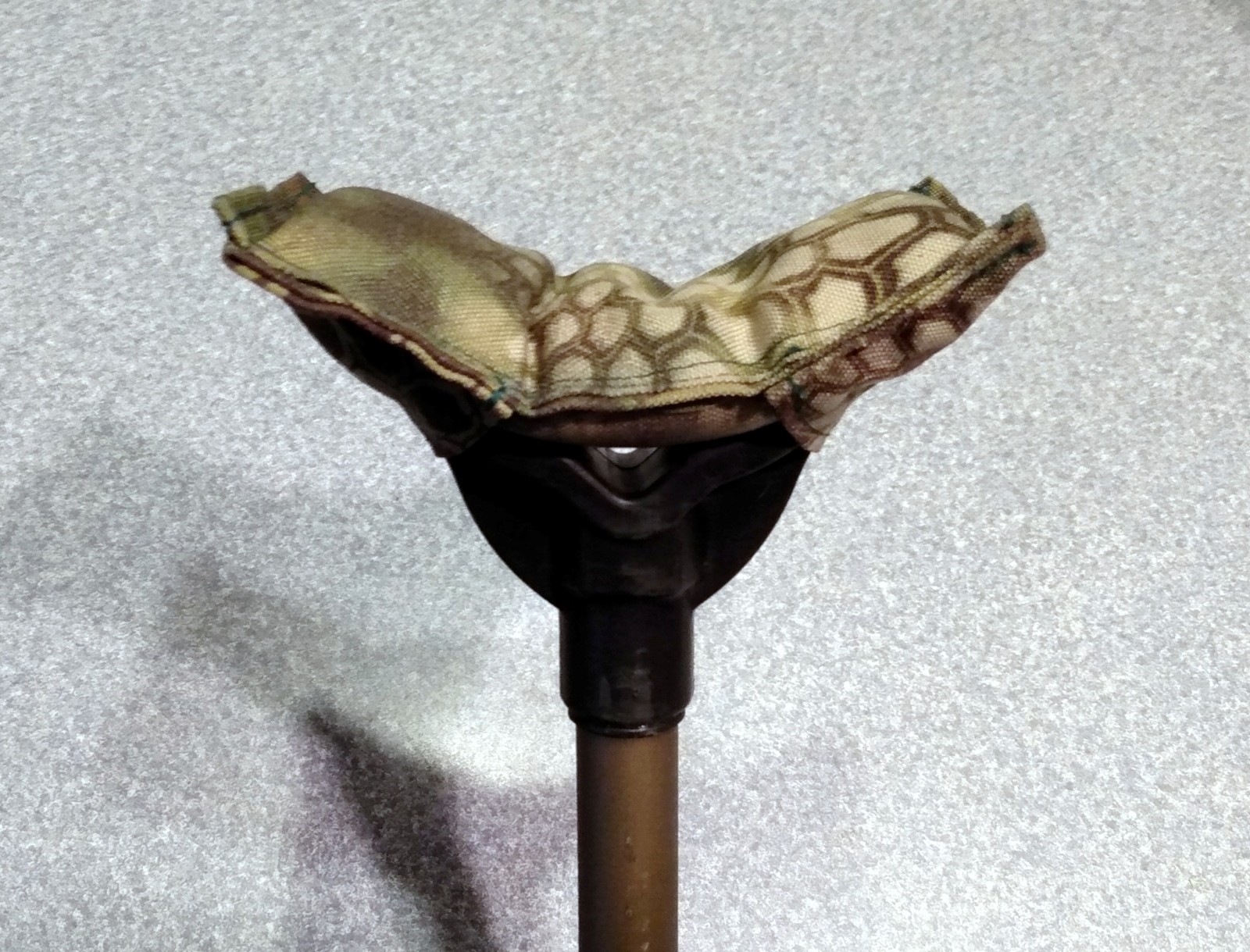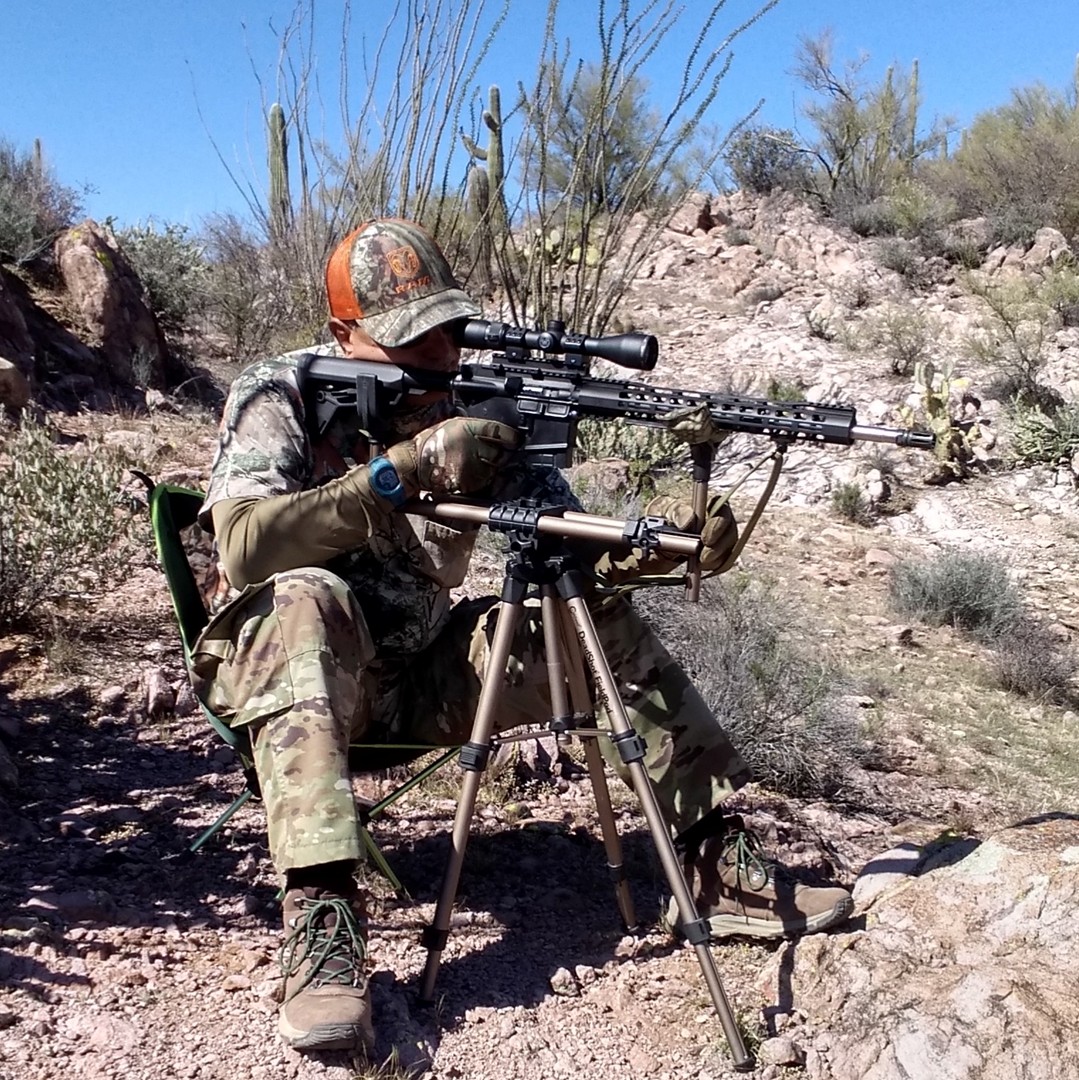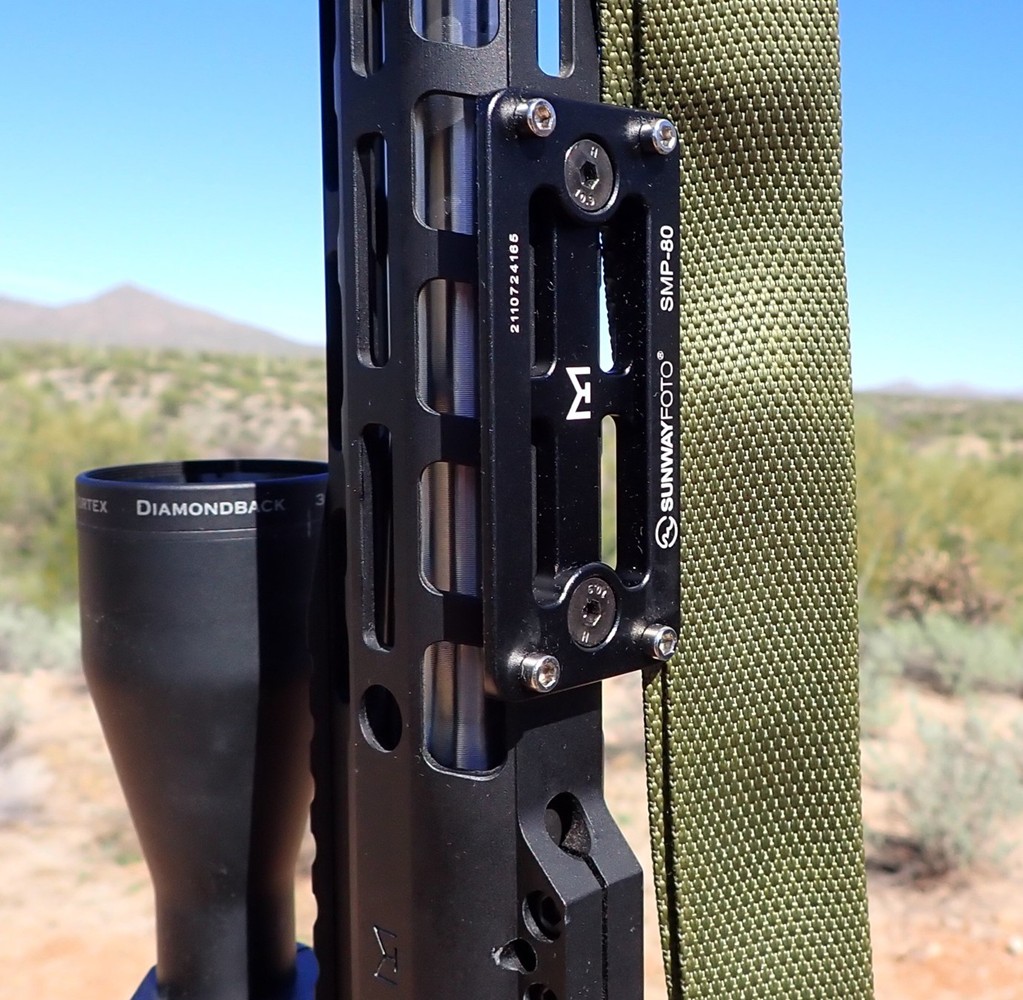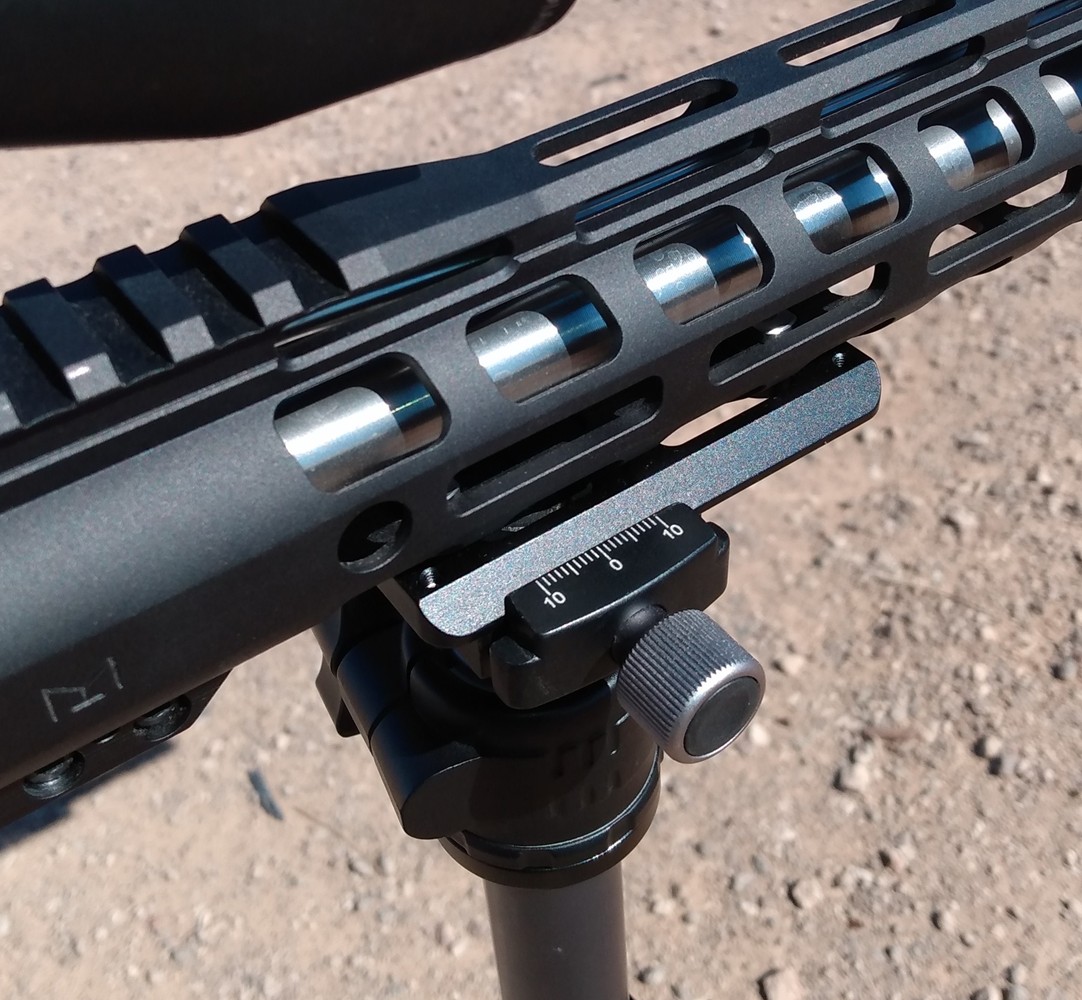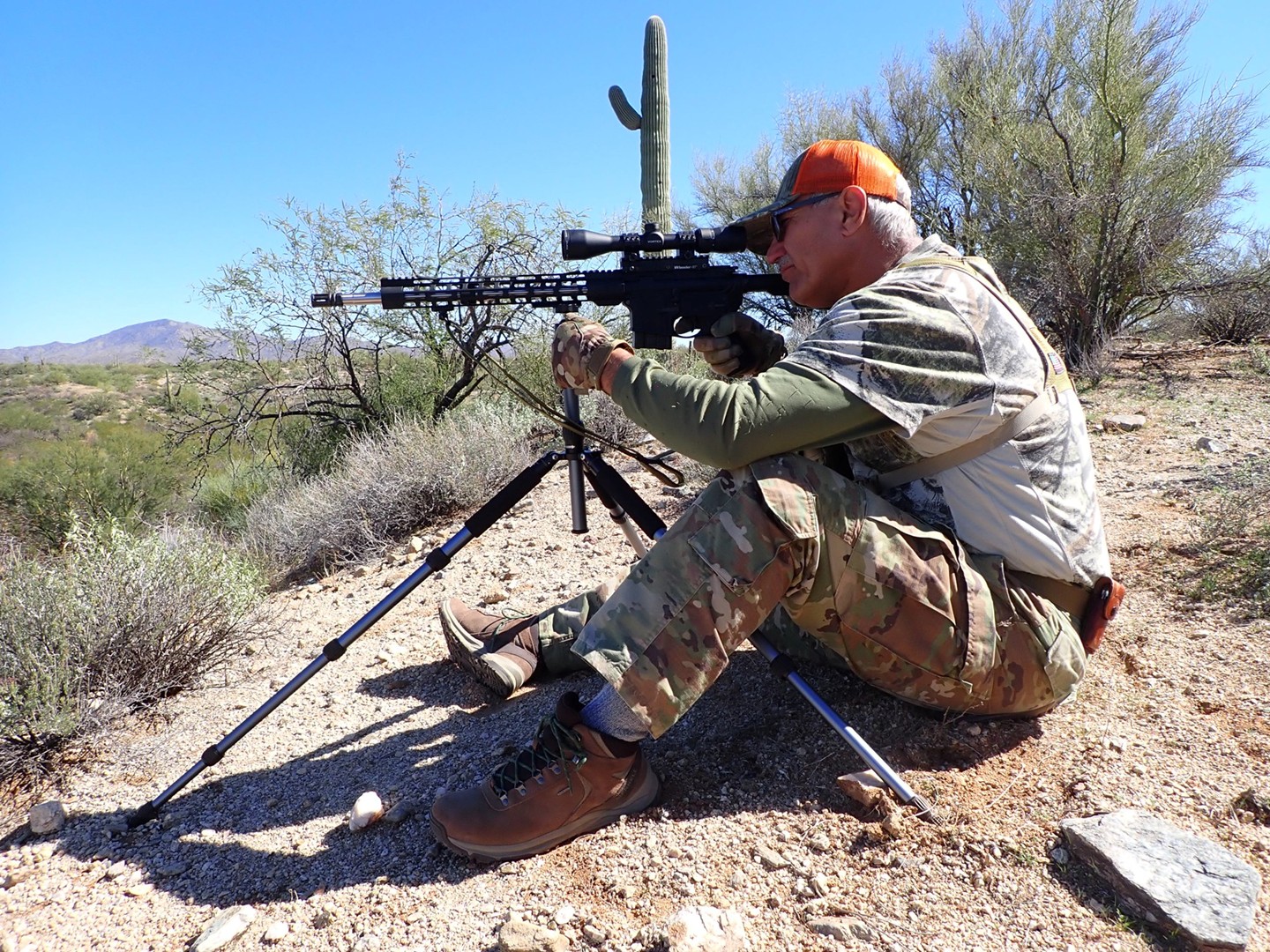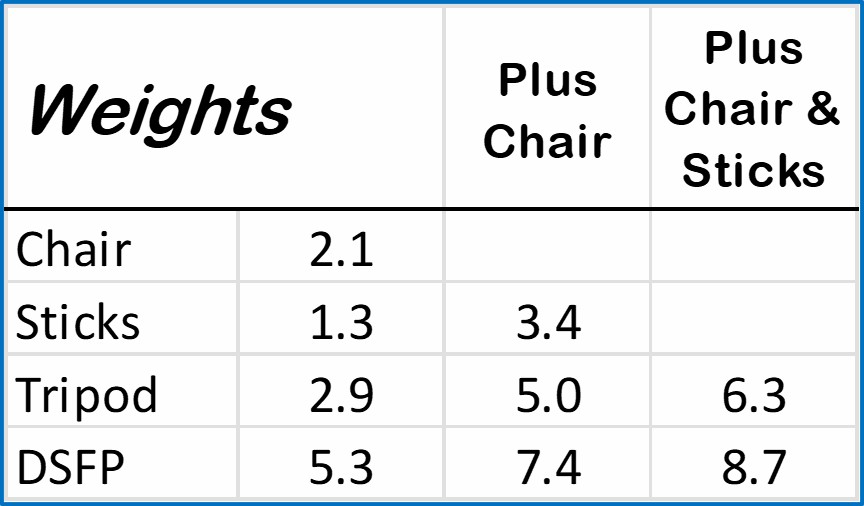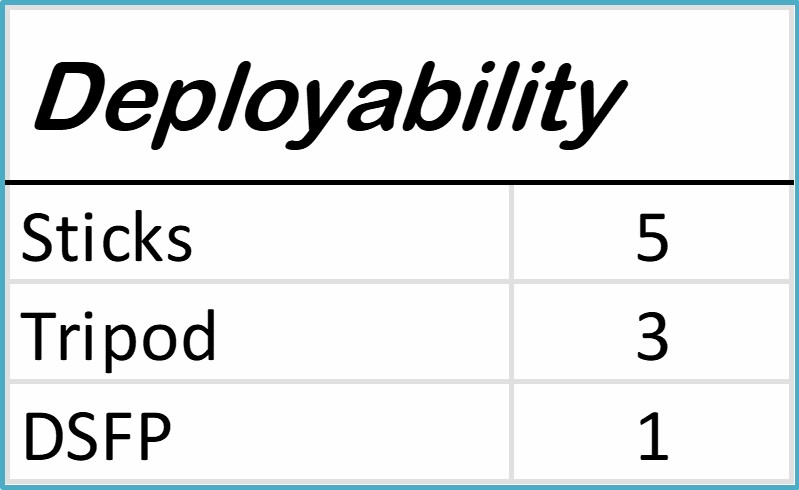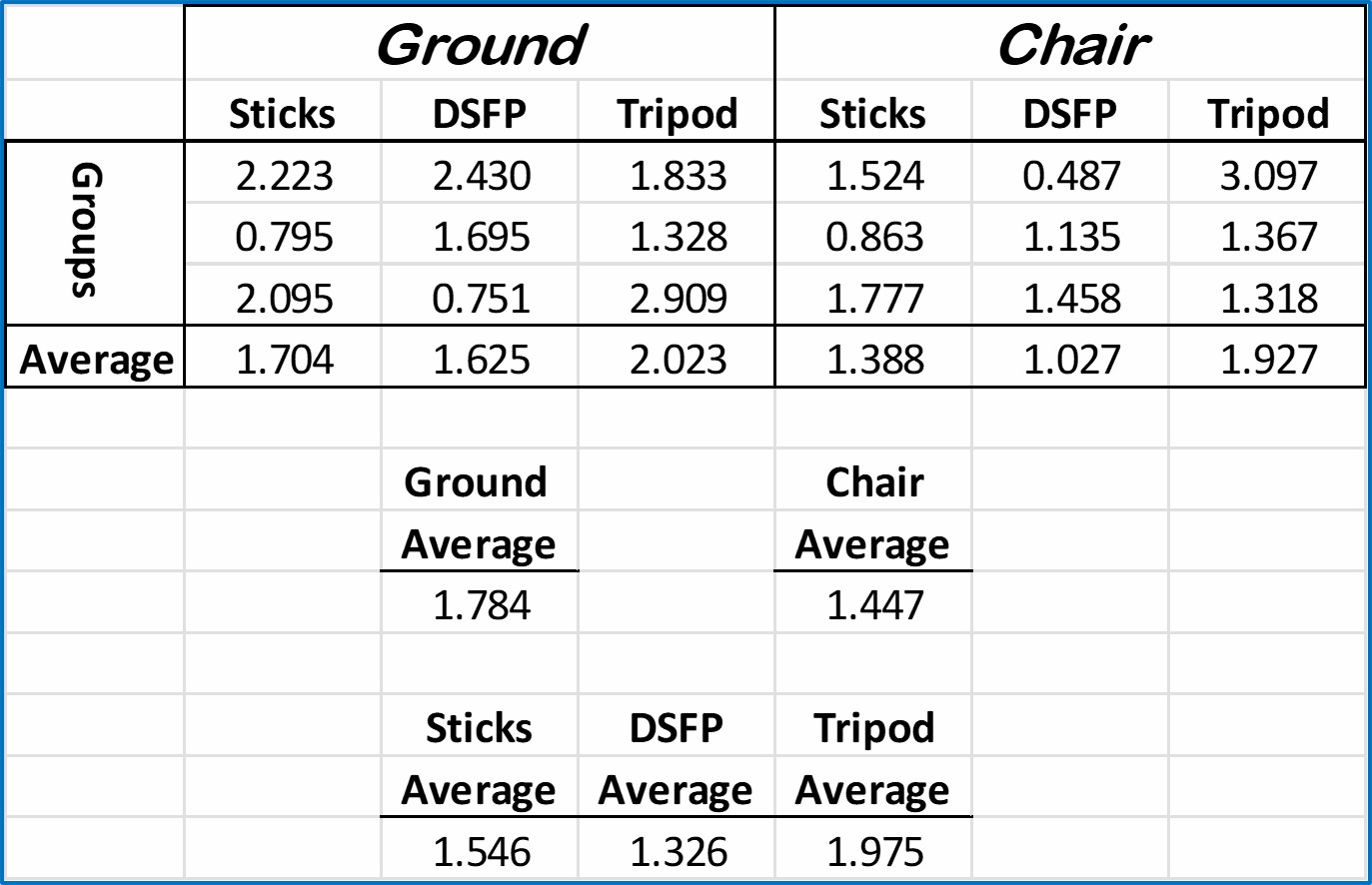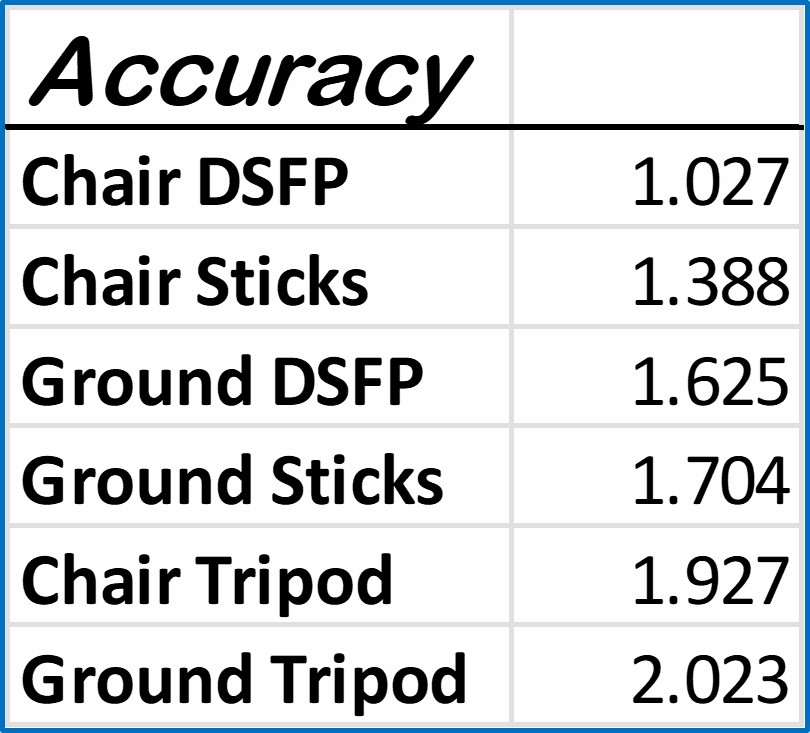Several things got me interested in re-thinking field rests lately. For one thing,
Gerhard has recently been hyping using a bench-rest out in the hunting fields. He
has written lately about his experiments,
and actual use of a portable bench on a hunt.
Second, I made my longest kill ever using a Caldwell DeadShot FieldPod, which has
been my field rest of choice when setting up a sit-and-wait hunting observation
post, though it is not a tool that I use for general hill roaming.
Thirdly, I discovered a new method of attaching your rifle to a tripod using a
quick-release mount popular with photographers, which is now gaining traction with
the precision long range shooting crowd.
Still one more precipitating event which got me re-thinking the best way to steady
my rifle in the field was when I wrote about missing a shot at a ram using my favorite
field rest when on the move, my shooting sticks. After reading my story, Gerhard wrote
me asking about how often I practice off the sticks. I had to tell him, not enough.
The fact is, about the only time I practice off the sticks is at our club shoots, most
notably, at the Buckhunters’ Challenge.
Even so, over the years, I have made a number of kills off the sticks out to a maximum
of 260 yards. But I missed that ram at 210 yards, a shot that I should have been able
to make.
I say that I am “re-visiting” the subject of field rests, because I addressed this once
before, back in 2013, in a gear review I wrote about the
DeadShot FieldPod. In that story, I performed a test comparing shooting from a bench,
from my sticks, and from the DeadShot FieldPod.
I shot 27 5-shot groups, using three different rifles. This test certainly wasn’t the
best shooting that I’ve ever done. I had groups of around three inches at 122 yards.
The average difference from worst to best was only .67 inches comparing these three
methods of resting a rifle.
This time I was more interested in comparing three rifle rest methods that you might
actually consider using when you are on the move, not just setting up a fixed ambush.
This means that a bench rest setup was not in the plan. Before getting to the actual
test and the results, let me discuss the pros and cons of the three rifle rest methods
I recently tested.
My Sticks
A long time ago, I stumbled upon Varmint Al’s website. One of the things he discusses
there is his “Bi-Fur-Pod”
shooting sticks. After reading that page, I set out to build my own take on Varmint Al’s
sticks. There have been a number of small refinements of Dan’s Sticks over the years.
I have had the chance to make several sets, between making several for my boys as they
grew up, and a couple for me, because sometimes I lose them.
I start with an oak one-by-two, splitting it into two one-by-ones on my table saw. I
size the length of the sticks to the height of my sternum when standing. They need to be
that long because one of the primary purposes for them is as a hiking staff in the rough
country. I make a sheet metal clip that holds them together at the bottom when in hiking
stick mode. It makes an excellent hiking stick.
There is another important use for the sticks in the field, besides their obvious use as
a shooting rest -- that is, as a field rifle rack. There are numerous times, when out
in the field, that you need to take a break and get that rifle off your shoulder or out
of your hands.
It is a simple matter to open the sticks and form a tripod with your rifle resting in
the crotch of the sticks. There may not be a handy tree nearby to rest the rifle
against. If you rest it against a rock, you are pretty much guaranteed to mar the
rifle. With the sticks in-hand, I always have a rifle-rack ready-to-go.
With their length, they are useful both sitting with your butt on the ground, or
sitting in a chair, or a chair-size rock for that matter. Height is adjusted by
the spread of the legs. The maximum spread is limited by a loop of paracord tied
below the pivot point. They don’t work from a standing position. They are too
short for that.
Cons: You cannot put them in your pack if you would ever like to walk with your
hands free. There is no other way to have them, than to carry them in-hand. If
you suddenly need to use two hands, say to bring up your binoculars to check
something out, you end up stuffing the sticks between your thighs – which looks
funny, but oh well.
Because there are only two points in contact with the ground, the sticks can rock
back and forth in use as a rifle rest. The sticks are not as stable as a tripod
arrangement. They are most stable when used as pictured on the left, from a chair.
With your butt in a chair, you are best able to use your knees as solid contact
points to ground your elbows. Sitting on the ground, body geometry does not allow
me to rest my strong side elbow on my knee with any degree of stress-free comfort.
Shooting stability is greatly compromised if you cannot ground that elbow.
The DeadShot FieldPod
I first purchased and started using a Caldwell DeadShot FieldPod (DSFP) back in
2012. It is no longer marketed as a Caldwell brand product. Today it is sold
as a Bog FieldPod. DeadShot was dropped from the name. Caldwell and Bog are
related companies.
This shooting rest is a tripod type, with an adjustable top rail that holds two
forks. One fork rests the buttstock, while the other fork rests the forend of
your rifle. The gun rail cannot be detached from the tripod, so the FieldPod
cannot be used for glassing purposes.
The forks are made of hard rubber. For many seasons, I would pad the front fork
of the FieldPod with a folded-up bandana. I wanted to deaden any recoil bounce
from the forend for best possible accuracy. I have to admit that I never did a
with/without bandana test to see if it made a difference, but my superstition
says that it does. A couple of years ago, I sewed up a little plastic-bead-filled
beanbag that attaches to the front fork. I like that solution even better.
The FieldPod provides almost benchrest-like stability. You can tighten or loosen
the tilting and panning tension knobs as needed. You have limited, but enough roll
of the rifle in the forks to allow you to level your crosshairs. If that fails, you
can adjust the tripod leg lengths to get level.
The biggest con of the FieldPod is its weight. It weighs about 5¼ pounds.
Because of that, up until the last season, I have only used this when setting
up a sit-and-wait ambush position. It is great for that. I have taken a chair,
a small portable table, some form of shade, and the FieldPod, to create an
absolutely all-day comfortable sniper’s hide. Three deer have taken a dirt nap
from this setup.
Sitting in your chair, waiting for your quarry to show up, your rifle can be out
of the way, but at the ready in its cradle. It is a simple matter to grab the
entire tripod and rifle package and move it in front of you when the time comes.
I will hike it in up to a half mile strapped to my pack where I will set it up
and leave it for several days. But due to the weight, I never carry it while
roaming the hills, to have “just in case”.
The other major con with it, is time to deploy. It folds up into a rather
compact package about 2 feet long by about 6 inches across. But to unfold it
for use, you must first loosen every adjustment point, unfold, then retighten
every adjustment. It can take some fiddling around to get it adjusted correctly.
This is where the sticks are vastly simpler and quicker to deploy. If you are
hiking around and see something that should quickly be shot, you don’t want to
be messing around trying to unfold the DSFP.
So while the FieldPod can be carried, it is not a quick-reaction rest – unless
you have someone carrying it for you, in a mostly deployed state. I had that
luxury on my sheep hunt, where my son Sam carried it, then plopped it down in
front of me at the crucial moment. This rest’s stability allowed me to take
that ram in excess of 500 yards away.
An Arca-Equipped Tripod
In the lead-up to my sheep hunt, I got over-obsessed about upgrading my optics
equipment. I ended up purchasing two new pairs of 12x50 binos for my sons, with
tripod adapters for them, a new Leupold carbon fiber tripod, a sturdy, but heavier
Vanguard tripod, plus a used, but good condition Pentax spotting scope with a
[pro]master tripod (that’s the way they spell it) from eBay. Counting my old
friend, a lightweight Velbon tripod, I now suddenly owned four tripods. Yeah,
I know — I went a little overboard.
The Leupold and the Vanguard came equipped with something called an Arca Swiss
compatible quick release system. This was new to me. As I dug into it, I
learned that this system had become very popular in the photography world.
It consists of two parts; a screw-tightening dovetail clamp on the tripod, and
a 38mm wide 45° dovetail plate that attaches to your optical gear.
I saw that it would be advantageous to convert my non-Arca tripods by adding
Arca-type clamps to them, and putting Arca plates on all the bino tripod adapters
and my two spotting scopes. Then any optical device could easily be moved to
any of the tripods. I would not have to worry that I needed a certain tripod
for a certain bino or scope.
Later, after the sheep hunt was over, I learned that the Arca system had also
become popular in the precision rifle game. By adding an Arca plate to the bottom
of a rifle forend, a rifle can quickly be attached to a tripod with an Arca clamp.
In fact, some chassis rifles used in the precision rifle game come with a full
length Arca dovetail machined right into the bottom of the forend. One example
is the Savage Elite Precision rifles featuring chassis from Modular Driven
Technologies (MDT).
The simplest path for me to try this field rest option was to attach an Arca
plate to the bottom of my 6.8 SPC AR-15 using the M-Lok slots on the bottom of
the forend.
For much of Western hunting, you may be carrying a tripod for your optics anyway.
Being able to use your optics tripod as a rifle rest has obvious advantages. An
Arca equipped tripod has all the stability of the FieldPod but is much quicker to
deploy.
An optics tripod can also weigh less than the FieldPod. Of those four tripods
that I now own, the lightest is the Velbon at 2.1 pounds, followed by the carbon
fiber Leupold at 2.2 pounds. That’s less than half the weight of the FieldPod.
However, for shooting stability and being better able to handle recoil, I decided
that the slightly heavier [pro]master was my best bet for rifle rest duty at 2.9
pounds. The Vanguard is even beefier at 3.5 pounds, but the carry weight problem
starts to rear its ugly head with this one.
When I received the [pro]master from the eBay seller, it was equipped with a
Manfrotto head. It was large and heavy. Besides, it used the Manfrotto quick
release system, not Arca Swiss. I replaced the complex Manfrotto head with a simple
low-profile ball head with Arca clamp. The ball tension can be conveniently adjusted
using the thumb and forefinger of your weak hand when used as a shooting rest. When
the ball head is tightened all the way, the tripod will hold the rifle suspended in
mid-air even though the Arca plate is a little bit forward of the rifle’s balance
point. The [pro]master tripod allows three different leg angle adjustments. The angle
pictured above is the middle setting.
So, is an Arca-equipped tripod the sweet spot for a rifle field rest considering
stability, accuracy, carry weight, and quick deployability? Let’s do a shooting test
to find out.
The Shooting Test
Before I get into the details of the shooting test, let me first say that no matter
what, the shooting sticks stay. They are just too good for their other two uses,
as a hiking stick, and as a portable rifle rack, for me to give them up. Neither
of the other two solutions can serve as a stout hiking stick. The time and trouble
it takes to pull the tripod field rests out of the pack on your back and set them
up negates their usefulness as a rifle rack as well.
The backpacker chair that I wrote
about in November of 2020 is also now a permanent part of my hunting kit. Lightweight
at only 2.1 pounds, it is definitely worth the small weight penalty it adds to my
hunting pack. Let’s compare the carry weights of the various field rest solutions:
The chair is not a quick-deploy solution, but it allows setting up an ad hoc (not
pre-planned) sniping position while on the roam. Plus, as we are about to see, it
has definite accuracy enhancing utility.
The chart above addresses the carry weight issue, but what about deployability? If
I were to assign a deployability point score from 1 to 5 to the three field rest
solutions, 5 being best, that chart would look like this:
I had considered adding a ¼-20 T-nut or two to the bottom of the forend of at least
one of my traditional sporter rifles, to be able to add an Arca plate, but I had
not yet taken that step. So my shooting test would use only that
6.8 SPC AR-15 that I had started building
in the summer of 2020. I’ve had my share of tribulations with it, but it has now
become one of my favorite pets. It still won’t shoot the heavier 6.8mm bullets
very well, 110 to 120 grains, but it does pretty darn good with 90 grain bullets.
I wanted to test both with and without the chair (butt on the ground) to see what
effect that had on accuracy. I decided to shoot three 3-shot groups from each of
the three field rests. That ends up being 9 shots, times three field rest options,
times two sitting positions, equals 54 shots total. My shooting sequence had me
firing two groups, taking six shots, then walking 100 yards downrange to replace
the target, allowing some time for the rifle to cool for every two groups fired.
I did not clean the gun during the test. The load was the 90 grain Speer TNT
varmint bullet at around 3000 fps.
Enough of the preliminaries, here is the data:
To say that I was surprised by these results would be understating things. I was
definitely not expecting the Arca tripod solution to be the worst. This is the
solution being used by many precision rifle shooters today. That the sticks would
outperform the tripod gives me renewed confidence in them. It's clear that chair
is better than no chair. It is also evident that the DeadShot FieldPod is the
overall winner.
So why did the Arca tripod solution do so poorly? In hindsight I think it comes
down to the ability for the rifle to recoil freely. With both the sticks and the
DSFP, the forend can freely jump up off the padded rest during recoil. With the
Arca tripod solution, the entire tripod is forced to jump when the shot is taken.
This must lead to inconsistency that adversely affects grouping. An even stouter
(heavier) tripod may lessen this problem (or not), but … carry weight.
Mind you, this was one test, by one guy, with a somewhat average rifle. The 6.8
SPC is a modest kicker. I can’t say what the results might be using a more common
game hunting caliber. Sure, the results could be tainted by the skill of this
particular shooter as well. Just a few caveats.
But for me, the results lead me to keep going as I have been: Use the sticks for
everyday hunting on foot. Keep the backpacker chair in my pack, use it when I can.
When setting up a fixed ambush post, use the FieldPod.


